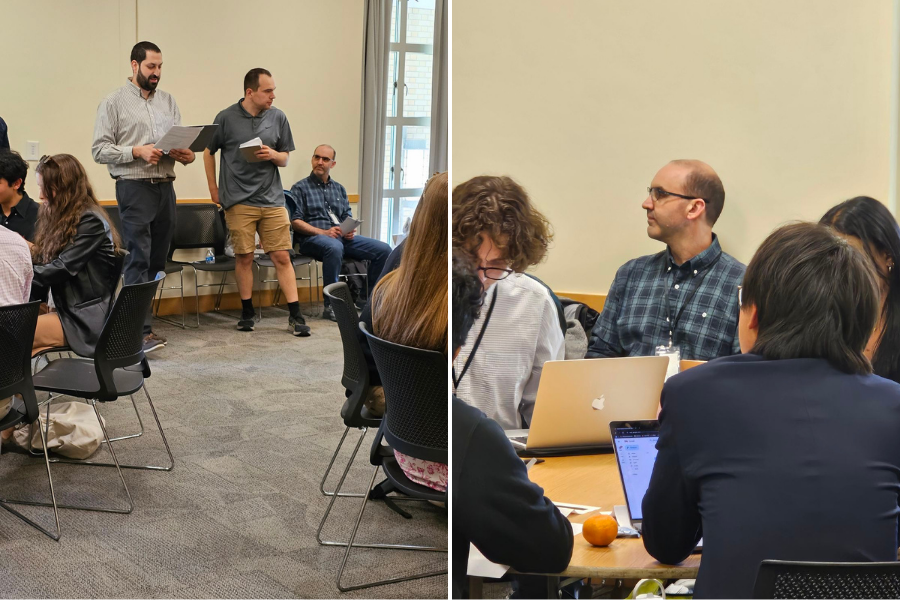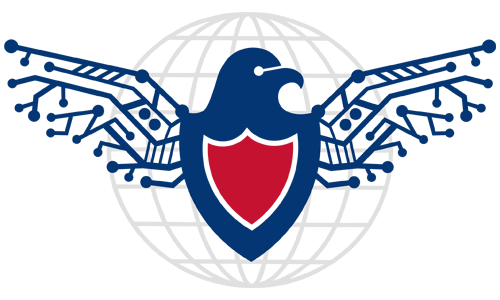
Strategic Thinking Through Simulation
Bringing a Regional Summit to the Classroom
By Lindsay Marcellus
Creating bridges between what students learn in class and real-world scenarios involving complex political issues is an important focus for Dan Silverman, assistant professor at the Carnegie Mellon Institute for Strategy and Technology (CMIST).
Last spring, Silverman started working with Laurie Eisenberg, professor emerita at Carnegie Mellon University (CMU) and historian of the modern Middle East, to provide students an opportunity to test out their research skills and creative energies by participating in a simulated emergency regional summit addressing a fictitious crisis in the Middle East. The two professors implemented a joint version of the simulation between their classes shortly before Einsenberg’s retirement in 2023.
Inspired by her own role-playing experiences in school, Eisenberg has integrated simulation activities throughout her 30 years of teaching. Silverman, whose research focuses on international security, the Middle East, and political psychology, attended one of Eisenberg’s simulations and was impressed by how well it sparked student engagement. Last year’s collaborative activity went so well that Silverman decided to recreate the experience for his course on war and peace in the contemporary Middle East this past semester, for which Eisenberg returned to provide assistance and advice.

This year’s theme revolved around internal and external threats to Jordan, as a way to build on students' knowledge of the ongoing Israel-Hamas war while centering a different country in the region. Students received their role assignments before spring break. Roles included the heads of state, foreign ministers, and defense ministers of many countries in or with significant interest in the Middle East. Other assignments included the roles of non-state actors and various media representatives.
After the break, students completed research assignments designed to familiarize them with their role, the country (or non-state actor) they would be representing, and its history or interest in the Middle East. Then, on the eve of simulation week, Silverman sent out a memo with details of the fictional crisis that students would respond to during a mock regional summit convened by the United Nations (UN).
“Every actor had individual goals, as well as each group, and would do what they could to get those goals into each agreement,” explained Samantha Ledford, a rising sophomore majoring in international relations and political science. Ledford, who is pursuing an additional major in decision science along with a minor in American politics and law, acted as the Secretary General of the UN. She was one of three UN team members responsible for helping to moderate the simulation.

While students could prepare statements in advance, the outcome was far from predetermined. Teaching assistant Kyle Patterson and CMIST U.S. Coast Guard Fellow Ken Sauerbrunn joined Silverman and Eisenberg to observe the working groups. These four observers also facilitated the negotiations, for instance by guiding groups when conversations became counterproductive or helping assess how proposals could impact the negotiations.
Eisenberg believes it is important to allow room for the negotiations to develop in different ways. She recounted a time in high school when her role play experience was cut short because she hadn’t noticed a note under her chair indicating that her character was a target for assassination. In this spring’s simulation, non-state actors who were not included in the formal negotiations still had the opportunity to exert their influence by suggesting extralegal actions such as a coup or a kidnapping. If the professors accepted the proposal, the outcome (i.e., success or failure) of the extralegal action was decided by a coin toss. Silverman noted that the suspense was palpable as everyone watched in anticipation of how events would unfold.

This year’s simulation included an element involving a hostage rescue. CMIST U.S. Air Force National Defense Fellow Bridget K. Pantaleon provided insight into how intelligence, surveillance, and reconnaissance supports personnel recovery operations. Pantaleon had first hand experience while deployed in support of Operation Inherent Resolve in 2014-2015, when a Jordanian F-16 pilot was captured by ISIS terrorists.
“This type of simulation better prepares students for the transition from idealistic academic settings and controlled scenarios to real-world operations where decision-making can, at times, yield unexpected and undesirable results,” said Pantaleon.
In the two years that Silverman has been conducting this simulation, he has witnessed students making connections between the role-playing and course readings. The activity “definitely boosts engagement,” Silverman said.
These findings mirror Eisenberg’s: role-playing deepens student learning. “They tell me they remember the information they had to use in the simulation better than they remembered information obtained by standard lectures, reading, taking notes, and discussion,” Eisenberg said.

After the event, Silverman’s students have described the activity as high-stakes and the process as messy. Yet it also helps them venture into uncharted territory.
“This simulation allowed everyone to get out of their comfort zone and become an actor, something I will take with me throughout my career at CMU and beyond as it made me realize you have to break out of your shell to get things done,” said Ledford. She added that it now feels easier to push her boundaries since she has already done so for the simulation.
While it is rare for students to change their opinion about an individual or group, Silverman has discovered that participants end the semester with a better understanding of the actor’s motivations and worldviews.
“This is such a great opportunity for students to think strategically and to apply a semester of learning in a creative context,” said Sauerbrunn. With 18 years of experience in the military, he has seen the importance of strategic thinking firsthand. “Leaders are most successful when they can think strategically, put themselves in the shoes of their adversaries or competitors, and educate themselves on the broadest range of issues," Sauerbrunn observed.
One of Eisenberg’s favorite comments was when a former student told her “That was incredible!” Although he “didn’t believe a single word" he was saying, he advocated that everyone should play the role of a character whose viewpoint is opposite their own.
Addressing potential concerns about playing roles against a student's beliefs or heritage, Eisenberg explained that exploring your opponent's perspective, regardless of the objective (military victory, negotiation, or common ground), improves the chances for success.
Whatever objective students bring to the process, they leave the simulation with a deeper understanding of the motivations of individual actors as well as a greater appreciation for the complexity of the policy-making process. “They really get into it, they enjoy it,” Silverman said. “It pushes them to learn about their country and group, to really engage with the details of the scenario, and to come away with some takeaways from the process.”
(Image 1: Prof. Dan Silverman facilitates the participation of students in his War and Peace in the Contemporary Middle East course during the simulation of a regional summit; Image 2, left to right: Prof. Laurie Eisenberg and Prof. Dan Silverman guide students during the simulation; Image 3: left - Prof. Dan Silverman gives direction to students; right - CMIST U.S. Coast Guard Fellow Ken Sauerbrunn observes the working groups during the simulation; Image 4: A coin toss decides whether a proposed extralegal action succeeds or fails; Image 5: left - Students participate in the simulation; right - Prof. Dan Silverman)
In addition to this course on the contemporary political situation in the Middle East, Silverman also teaches a course on fake news and disinformation each spring and is developing a new course on the politics of antisemitism for this fall, which counts towards the Perspectives on Justice and Injustice category of the Dietrich College General Education requirements. Students interested in taking the new course this fall should reach out to Deputy Director Emily Half.
